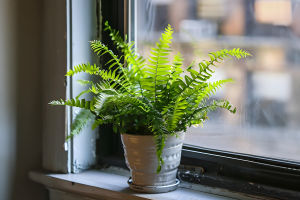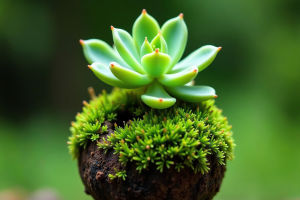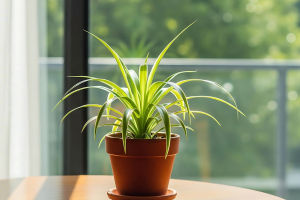You don't need acres of space or a green thumb to enjoy fresh herbs at home.
In fact, some of the most flavorful herbs you'll ever cook with can be grown just steps from your stove—on a windowsill, countertop, or hanging basket. And no, you don't need fancy equipment or special lights to get started.
The key is understanding what herbs need—and what they don't.
If you've ever bought a bunch of parsley, only to toss half of it wilted in the trash, this guide is for you. Growing herbs indoors isn't just fun—it's practical, affordable, and can change how you cook every day.
Start With the Right Herbs
Not all herbs grow equally well indoors. Some require more sun or root space than others. For beginners, choose herbs that are compact, resilient, and tolerate a range of indoor conditions.
Basil: Loves warmth and sunlight. Grows fast and is great for pasta, salads, and sauces.
Mint: Extremely hardy. It spreads fast, so keep it in its own pot.
Parsley: Slow to start but steady. Ideal for bright windowsills.
Chives: Low maintenance, and you can snip a few stems at a time.
Thyme: Hard-stemmed, drought-tolerant, and doesn't mind a bit of neglect.
These herbs aren't just easy—they're versatile, meaning you'll use them frequently, which helps keep the plant trimmed and healthy.
Pick a Sunny Spot—Then Adjust
Most herbs need about 6 hours of sunlight a day. That doesn't mean you need a greenhouse. A sunny kitchen window, especially one facing south or west, will usually do the trick. But if your space lacks sunlight, don't give up.
What you can do:
• Use a small LED grow light or desk lamp with a daylight bulb.
• Rotate pots weekly so plants grow evenly.
• Avoid putting herbs near cold drafts or heat vents.
Inconsistent lighting is one of the top reasons indoor herbs struggle, but it's also one of the easiest problems to solve once you notice it.
Soil and Water: Don't Overdo It
One of the most common mistakes indoor herb gardeners make is overwatering. Unlike outdoor gardens, indoor pots don't have the same drainage flexibility—and most herbs hate soggy roots.
Follow these basics:
• Use pots with drainage holes.
• Choose a lightweight potting mix, not garden soil.
• Water only when the top inch of soil feels dry to the touch.
Basil, for instance, will droop dramatically if it's thirsty—but it will also rot easily if overwatered. With herbs, less is often more.
Size and Spacing Matter
You might be tempted to cram multiple herbs into a single cute pot, but this can backfire quickly. Roots compete, air circulation drops, and plants grow weak.
Tips for healthy spacing:
• Use individual pots, at least 6–8 inches wide.
• Group pots together for humidity, but keep a little airflow between them.
• Trim frequently to prevent overcrowding and encourage bushier growth.
Regular trimming isn't just about keeping plants tidy—it actually helps the herb grow better and taste fresher. The more you harvest (correctly), the stronger the plant becomes.
Know When to Harvest
The timing and method of harvest can make or break your herb garden's longevity. Cut too little, and the plant may become leggy. Cut too much, and you stress the roots.
Here's a good rule of thumb:
• Begin harvesting once the plant is about 6 inches tall.
• Snip with scissors just above a leaf node (where new branches form).
• Avoid cutting more than one-third of the plant at a time.
Thyme and oregano respond well to frequent light trimming, while parsley benefits from cutting full stems from the base.
Dealing With Indoor Challenges
Even indoors, your herbs may face some challenges—like pests, mold, or stunted growth. Most of these are due to moisture imbalances or poor airflow.
Here's what helps:
• Don't let leaves sit wet—water the base, not the top.
• Use a small fan nearby if air feels stale.
• Wipe down dusty leaves to keep them breathing properly.
• If gnats show up, let the soil dry more between watering or sprinkle a thin layer of sand on top.
These simple habits can prevent most common issues before they start.
The Real Payoff: Freshness and Flavor
Once your herb garden is established, the benefits stack up. You'll spend less money at the store, avoid waste, and always have fresh herbs when you need them. A sprig of rosemary in your roasted veggies, a few basil leaves in your eggs, or some mint in your tea—it all feels more satisfying when it's something you grew yourself.
And let's not forget: watching your herbs grow while sipping your morning coffee is its own kind of therapy.
So—What Will You Grow First?
Indoor gardening isn't about perfection. It's about starting small, observing what works in your space, and enjoying the little wins—like the first leaf of parsley or the scent of thyme on your fingers.
Have you tried growing herbs indoors before? What worked—and what totally flopped? If you've never tried, which herb do you want to grow first? I'd love to hear about your home-grown experiments—and help you troubleshoot your setup if you need a hand.


